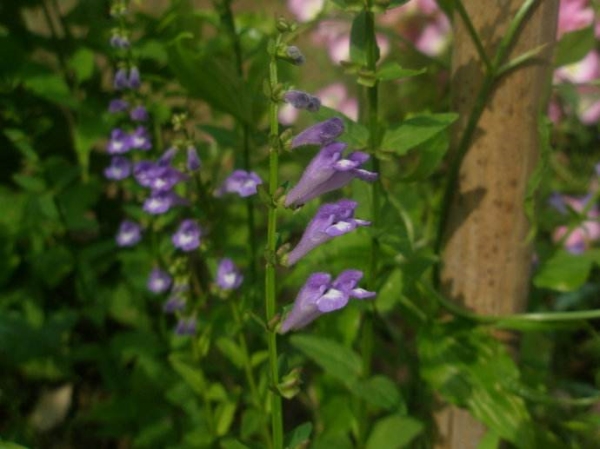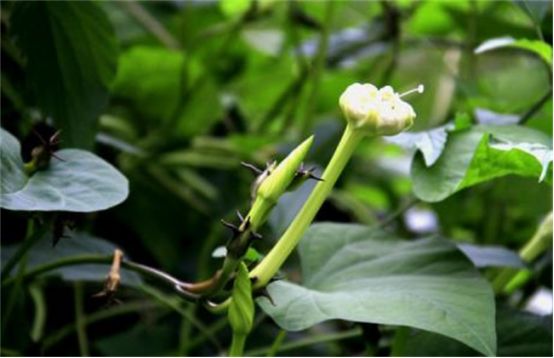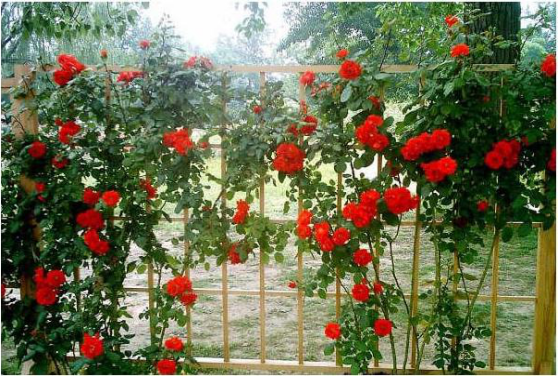Culture method of Scutellaria barbata
Scutellaria barbata likes to grow in a warm, dry and sunny environment. It is resistant to drought, avoids waterlogging and has strong adaptability to the environment. Therefore, we must not water too much in the usual breeding process, because the fleshy stems and leaves can store water, so they have a strong ability to resist drought. It needs to spend the winter indoors in the cold winter, and it needs enough light throughout its growing period to make the plant grow and blossom normally!

Do you understand the efficacy and function of Scutellaria barbata? Learn the method of farming and plant a pot at home as soon as possible. If you want to know more, please follow the four Seasons Plant Network!
Culture method of Scutellaria barbata
Culture method of Scutellaria barbata
In summer and autumn, whether in the flower beds in the garden, next to the house or in front of the window, you can often see an ordinary little flower. Although it is not expensive, it is lovable. In the hot summer, it is not afraid of the scorching sun, blooming with a bright smile, colorful, vibrant and often blooming. What is more valuable is that its vitality is extremely tenacious. In summer, if you put a few inches of twigs in a flowerpot, you will be able to produce delicate flowers the next day! Some people jokingly
Call it "immortal", "choke not to death"; although its name is indecent, it is actually indomitable to its vitality.
Praise and praise.
The stems and leaves of Scutellaria barbata are fleshy and clean, colorful and colorful, and the flowering period is longer, which can be called an ideal flower bed edge material, can also be used as a special kind of flower bed, but also suitable for potted plants. From summer to autumn, the flowers are in bloom, colorful and enjoyable.
Scutellaria barbata is an annual herb of Portulacaceae, which is native to South America and Brazil and has been widely cultivated in China. It is 10 to 15 centimeters high. The stem is thin and round, creeping or growing upward, leaves alternate or scattered, fleshy cylindrical. Peanuts at the top of the branch, flower diameter 3-4 cm, petals bright color, there are red, white, purple, yellow and other colors, as well as inlaid with several color patterns. It can be divided into double, semi-double and double. It blossoms from June to September. The sunrise opens and closes in the afternoon. The fruit is a capsule, and the capsule is easy to crack and scatter when it is mature, so pay attention to collecting and leaving seeds.
Scutellaria barbata prefers warm, dry, sunny and well-ventilated environment. Highly adaptable and easy to manage.
Scutellaria barbata can tolerate barren and dry soil, and potted sandy loam with good drainage.
For good.
Scutellaria barbata is a strong positive plant, like sunlight, not shade-tolerant, such as indoor or semi-shady environment, must not grow well or rarely blossom.
Watering should not be excessive during maintenance, and the basin soil is usually semi-dry.
Wet is better, too much water is easy to rot the root.
During the growth period, thin liquid fertilizer can be applied every 3 to 4 days to make it grow healthily and bloom luxuriantly.
Scutellaria barbata can be propagated by sowing or cutting.
Seeds can be sown in spring, summer and autumn. The seeds germinate when the temperature is above 20 degrees and germinate about 10 days after sowing. When 4-5 leaves are grown, the seedlings can be transferred and planted, from sowing to flowering.
It will take 2 months.
Cuttage propagation is often used for double petal varieties. The cut branches will be used as cuttings in summer, and the wilted stems can also be used. It is very easy to cut and survive, and flower buds can appear quickly.
The Culture method of Scutellaria barbata the efficacy and function of Scutellaria barbata
Scutellaria barbata is the dry aboveground part of Scutellaria barbata, which has the functions of heat-clearing and detoxification, promoting blood circulation and removing blood stasis, detumescence and pain, anti-cancer and so on. The following is going to tell you the culture method of Scutellaria barbata and the efficacy and function of Scutellaria barbata.
The culture method of Scutellaria barbata:
1. Environment: like warm, dry, sunny environment, drought tolerance, avoid waterlogging, strong adaptability.
2. Planting: cutting culture is the main method. The branches were cut off and placed in a shady environment for one day, and then directly inserted into plain sand the next day. After watering, it was easy to take root in a warm environment.
3. Temperature: like warmth, and the suitable temperature for growth is 20-30 degrees Celsius. Not cold-resistant, the lowest temperature should not be lower than 8 °.
4. Light: sensitive to light, strong positive flowers. It is not resistant to shade, and sufficient light is needed throughout the growing period to make the plant grow and bloom normally. The hot weather in summer coincides with the most prosperous period of plant growth and flowering, and sufficient sunlight is needed before the plant can blossom luxuriantly and brightly.
5. Watering: because fleshy stems and leaves can store water, they have strong drought resistance and can grow and blossom under drought conditions. However, in order to make the plant grow and blossom well, it is also necessary to provide proper water. Avoid excessive dampness and stagnant water, when it is more than 7 feet, it is easy to cause plant stems and leaves to grow, and even rotten roots to die.
6. diseases and insect pests: there are diseases and insect pests such as rust and diamondback moth.
7. Courtyard collocation: Scutellaria barbata is colorful, easy to cultivate and widely used in the courtyard. It can be planted on the edge of the grass and beside the path, and it can also be used as a ground cover plant facing the south courtyard and hang at the entrance of the porch as a drooping pot plant. It is also an excellent material for roof greening.
The efficacy and function of Scutellaria barbata:
1. Bacteriostatic effect: 50% decoction of Scutellaria barbata uses plate trenching method to inhibit Staphylococcus aureus, Shigella flexneri, typhoid bacillus, Pseudomonas aeruginosa and Escherichia coli.
2. Antispasmodic and expectorant effect: safflor contained in this product has a strong anti-smooth muscle contraction caused by histamine, and has a good expectorant effect.
3. Anti-tumor effect: the screening test with methylene blue test tube method showed that this product had a mild inhibitory effect on acute myeloid leukemia cells; the screening experiment with cell respirator method showed that the inhibition rate on blood cells of acute granulocytic leukemia was more than 75%.
4. Immunomodulatory effect: the polysaccharide contained in this product can promote the lymphocyte transformation of mouse spleen cells induced by ConA in vitro, and the optimum concentration is 400r/ml. One week after administration of Sc, the percentage of esterase positive cells in peripheral blood lymphocytes of mice was significantly increased and the delayed type hypersensitivity induced by DNCB was promoted. However, high dose administration (200mg/kg) could inhibit the thymus index of mice, but had no effect on spleen index.
- Prev

Culture of moonlight flower
Timely transplanting moonlight can be said to be not easy to raise plants, for many flower lovers, raising a moonlight is a luxury, the reason for luxury is that the survival rate is very low after each transplanting. In fact, the important reason for the unsuccess of transplanting is that the transplanting time is not right.
- Next

Reproductive form of rattan rose
The cutting of rattan rose is difficult to survive, and it is generally propagated by asexual propagation methods such as grafting. It is possible to be grafted from branches, buds and roots. Rattan rose watering rattan rose in the whole life period can not lack of water, from budding to leaf release, flowering stage, to ensure adequate water. Especially in the flowering period, there is a great need for water.
Related
- Fuxing push coffee new agricultural production and marketing class: lack of small-scale processing plants
- Jujube rice field leisure farm deep ploughing Yilan for five years to create a space for organic food and play
- Nongyu Farm-A trial of organic papaya for brave women with advanced technology
- Four points for attention in the prevention and control of diseases and insect pests of edible fungi
- How to add nutrient solution to Edible Fungi
- Is there any good way to control edible fungus mites?
- Open Inoculation Technology of Edible Fungi
- Is there any clever way to use fertilizer for edible fungus in winter?
- What agents are used to kill the pathogens of edible fungi in the mushroom shed?
- Rapid drying of Edible Fungi

